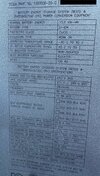Matt-FL
Member

Tesla starts Powerwall 3 installations: It looks worse but is more useful
Tesla has started Powerwall 3 installations despite not officially unveiling the product yet. The first installations confirm Electrek‘s first exclusive...
 electrek.co
electrek.co
Looks like this article used your install as a reference.



